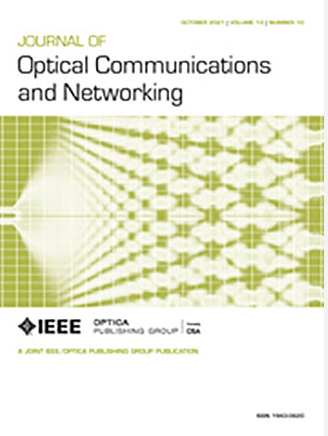Spectral segmentation-based RoFSO-channel’s mixed-RF-signal demodulation technique for the outdoor-optical 6G era network
IF 4.3
2区 计算机科学
Q1 COMPUTER SCIENCE, HARDWARE & ARCHITECTURE
引用次数: 0
Abstract
The worldwide communication industries are in urgent need of sixth-generation (6G) technology to meet the near-future terrestrial/space/deep-space data-rate/bandwidth requirements to provide the expected/demanded internet of everything (IoE) services. The ultra-broadband mixed-RF-signal transportation over the free-space optical (FSO) channel, i.e., RoFSO, is a potential and emerging candidate to fulfill the requirements of the near-future 6G era. The effective modulation and demodulation of a mixed-RF-signal to/from the RoFSO-channel is a primary requirement for the successful implementation of RoFSO schemes in 6G. An accurate spectral detection technique is proposed in this work in order to demodulate the transmitted mixed-RF signal over time. The proposed technique is validated using a 6 km RoFSO test-bed, and the results obtained from the different trials are reported. The results taped-out from the starting, intermediate, and the final stages of the proposed technique demonstrate the capability/accuracy of the proposed technique for the purpose of accurately demodulating the mixed-RF-signal from the RoFSO-channel. The measured correlation between the transmitted and received mixed-RF-signal is 100%, which proves the accuracy of the proposed demodulation technique. Furthermore, some recent research and challenges pointed out that RoFSO is mandatory for the implementation of advanced 6G-based applications such as undersea communication, space/deep-space FSO communication, quantum communications, secured wireless network for IoE applications, and multi-hop relay-based RoFSO satellite links.户外光6G时代网络中基于频谱分割的rofso信道混合射频信号解调技术
全球通信行业迫切需要第六代(6G)技术,以满足近未来地面/空间/深空数据速率/带宽需求,提供预期/需求的万物互联(IoE)服务。自由空间光(FSO)通道(即RoFSO)上的超宽带混合射频信号传输是满足不久的将来6G时代需求的潜在和新兴候选方案。有效调制和解调混合射频信号进出RoFSO信道是在6G中成功实施RoFSO方案的主要要求。本文提出了一种精确的频谱检测技术,以便对传输的混合射频信号进行时间解调。利用6公里的RoFSO试验台对所提出的技术进行了验证,并报告了不同试验的结果。从所提出的技术的开始、中间和最后阶段录下的结果证明了所提出的技术用于准确解调来自rofso信道的混合rf信号的能力/准确性。发射和接收混合射频信号的测量相关性为100%,证明了所提解调技术的准确性。此外,最近的一些研究和挑战指出,对于实现先进的基于6g的应用,如海底通信、空间/深空FSO通信、量子通信、用于IoE应用的安全无线网络以及基于多跳中继的RoFSO卫星链路,RoFSO是必不可少的。
本文章由计算机程序翻译,如有差异,请以英文原文为准。
求助全文
约1分钟内获得全文
求助全文
来源期刊
CiteScore
9.40
自引率
16.00%
发文量
104
审稿时长
4 months
期刊介绍:
The scope of the Journal includes advances in the state-of-the-art of optical networking science, technology, and engineering. Both theoretical contributions (including new techniques, concepts, analyses, and economic studies) and practical contributions (including optical networking experiments, prototypes, and new applications) are encouraged. Subareas of interest include the architecture and design of optical networks, optical network survivability and security, software-defined optical networking, elastic optical networks, data and control plane advances, network management related innovation, and optical access networks. Enabling technologies and their applications are suitable topics only if the results are shown to directly impact optical networking beyond simple point-to-point networks.

 求助内容:
求助内容: 应助结果提醒方式:
应助结果提醒方式:


